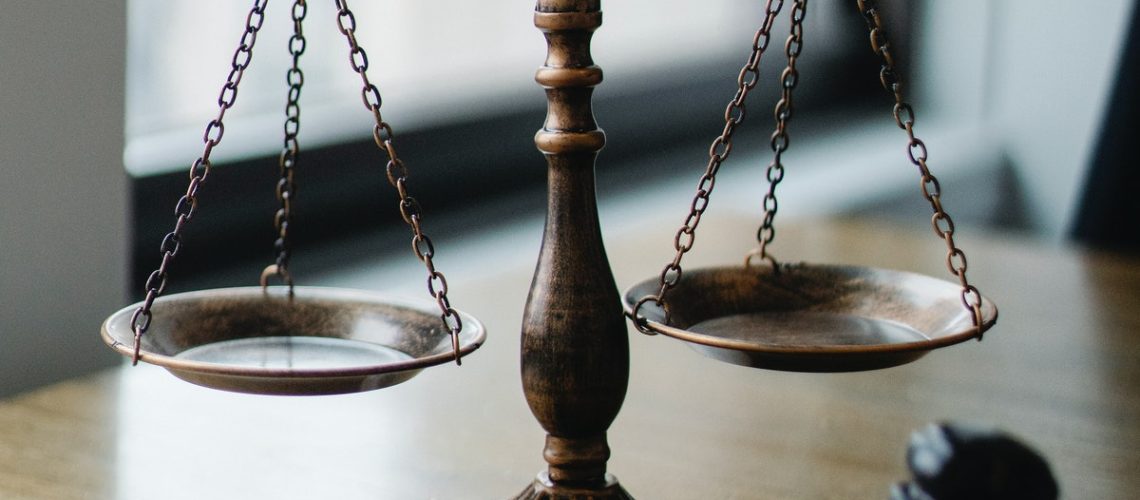The criminal justice system in Texas is essential in the prevention and punishment of crime. It is based on Texas criminal laws that protect the community from crime and ensure those who commit them are appropriately punished.
Table of Contents
- Types of crimes in Texas – Felonies, Misdemeanors & Infractions
- Step by step criminal justice process in Texas
- Investigation
- Arrest
- Arraignment
- Bail/Bond
- Indictment
- Pre-trial hearings
- Plea bargaining
- Trial
- Verdict
- Sentencing
- Appeals
Types of crime in Texas
According to the laws of Texas, crimes are divided into the following categories;
- Felonies
- Misdemeanors
- Infractions
What are felonies?
Felonies are serious crimes such as capital murder and aggravated assault, that are punishable by jail time and even execution.
The length of time criminals spend in prison for felonies varies depending on the seriousness of the crime and an offender’s previous criminal record.
What are misdemeanors?
Misdemeanors are less serious crimes such as burglary and DWI offenses. They are divided into class A, B, and C misdemeanors. They may lead to an arrest but do not attract long jail terms.
Punishments for misdemeanors include fines, probation, or county jail time. Due to the three strike law in Texas, some misdemeanors are upgraded to felonies.
What are infractions?
Infractions are minor crimes that may not lead to an arrest, such as jaywalking or over speeding. They are mostly punished by fines and community service. In other cases, offenders have to undergo mandatory educational classes.
What happens when you are arrested for a crime in Texas?
Getting arrested means dealing with the Texas Department of Criminal Justice. This involves the police, district attorneys, lawyers, the prison system and judges.
This can be a confusing and overwhelming experience, and when you don’t know what to do, it can cost you unnecessary time and resources.
However, if you understand the criminal justice system in Texas, you will know what to expect, when, and how it will be done.
Step by step criminal justice system in Texas
1. Investigation
Before a policeman can take you into custody, they have to investigate a crime and ensure they have cause to arrest you. This is known as probable cause.
Law enforcement officers are expected to investigate and justify a charge against you through various procedures such as;
- Interrogating suspects and witnesses to the crime;
- Searching property in which they suspect the crime was committed using a warrant;
- Seizing property they suspect is linked to the case and can be presented in court as evidence.
Once the police find evidence proving you are connected to the crime, it will give them probable cause to arrest you.
It is your right to have a lawyer with you during the arrest process.
If you are notified of the investigation before it starts, a lawyer can also help you through it.
Having a lawyer present during the investigation process will favor you during the trial.
2. Arrest
During an arrest, the officer must advise you of your Miranda Rights.
Once you get to the police station, you will be searched for any weapons or illegal substances, take your fingerprints and photograph, as well as record charges against you.
If you’ve committed a class C misdemeanor, the prosecutor will file a complaint against you.
If you’ve committed a class A or B misdemeanor, the prosecutor will file information against you.
In the case of felonies, prosecutors indict the responsible parties.
You may feel obliged to talk to the police about your charges, but that is not recommended.
Maintain your silence and contact your lawyer for assistance.
Keeping your lawyer by your side during this time will ensure the police follow due process.
3. Arraignment
Your first appearance in court when formal charges are filed against you is called an arraignment.
It should occur as soon as possible after your arrest. According to Texas law, you should be arraigned within 48 hrs of your arrest.
During the arraignment, the judge will ask you whether you plead guilty or not to the charges placed against you.
You will also receive a copy of the complaint, indictment, or information placed against you.
Your charges will also be read out formally in court. The judge should make sure you understand your rights such as, the right to be represented by a lawyer and, if you don’t have one, to have one appointed by the courts.
After the hearing, the judge will give you time to consult with your lawyer on the way forward.
You will find that most defendants plead not guilty at arraignments to avoid skipping straight to sentencing.
If you plead guilty, you miss out on the chance to fight your charges.
During an arraignment, your defense team or the prosecution may request a continuance, which is more time to investigate your case further.
If both parties are satisfied with the evidence tabled before the judge, they may enter a plea.
4. Bail or bond
To ensure you get back to court for the hearing of your case, a judge will set certain conditions. For example, he can set bail or cash bond based on your case and its seriousness as well as your financial situation.
It’s important to note that bail is not guaranteed. For example, if you have committed a capital offense, you may not get bail.
Sometimes the bail set is too high. During such cases, your lawyer should ask for bail reduction.
Once the case is over, your bail money will be refunded. In the case of a bail bond, a fee is charged by the bonding company, which will not be refunded.
5. Indictment
If you are charged with a felony, you will be indicted and your evidence presented in front of a grand jury. At least 9 out of 12 jurors in the grand jury must agree there is a probable cause of your guilt for the trial to proceed.
If these nine votes are not met, the prosecution cannot file any charges against you because they have failed to prove probable cause.
If the prosecutor wants to continue fighting for the charges to be filed, they can present the case to a grand jury for another judgment.
6. Pretrial hearings
Before your trial, there will be some meetings between your lawyers and the prosecution.
They will discuss your case, outlining its strengths and weaknesses.
For example, your lawyer may talk about your lack of criminal history or upstanding character, and ask for leniency.
The factors presented by your legal team during these hearings should help you make a plea bargain.
7. Plea bargaining
A plea bargain is where your defense lawyer works out a deal with the prosecution .
The deal gives a defendant a chance to get a favorable judgment, such as a reduced sentence in return for cooperating with the prosecutor.
For example, if you are accused of a crime, you may be asked to testify against an accomplice to have your jail term reduced. If you get a good deal, the prosecution may even drop the charges against you entirely.
Your attorney will negotiate in a plea bargain with the prosecutor. Your lawyer must then inform you of any offers agreed upon by the prosecution.
A plea bargain may require you to plead guilty. Additionally, it may also require you to waive some of your rights.
Although you may agree to a plea bargain and so may the prosecution, the judge is not obligated to accept the deal.
Related: A guide to plea bargaining in Texas.
If the judge says no to the deal, you are expected to withdraw your plea, be it a guilty or a no-contest plea.
Most criminal and federal charges go the plea bargain way.
8. Trial
If you plead not guilty, or your lawyer cannot agree with the prosecution on a plea bargain, your case will go to trial.
According to the Texas Constitution Article 1 section, 10 defendants can choose a trial by jury. If they don’t want a jury trial, they may choose to have a trial by judge.
In a jury trial, a jury and judge review the evidence against you and decide whether you are innocent or guilty.
9. Verdict
The judge and jury give a verdict of guilty when they believe a defendant is guilty beyond any reasonable doubt. The verdict must be unanimous, but if they cannot agree on a verdict, it is called a hung jury.
Where there is a hung jury, the court declares a mistrial.
After a mistrial, the defendant can go free, or the prosecution can try the case again.
If the verdict is not guilty, the defendant is cleared of the charges, and the decision cannot be overturned. In cases of a guilty verdict, the courts move on to sentencing.
Where there is a trial by judge, also known as a bench trial, the judge will look at the evidence presented and look at the law before giving their findings.
10. Sentencing
Once a defendant pleads guilty or is convicted by a jury and judge, they must be sentenced for their crime.
There are standard sentencing federal and state laws for each crime that guide the judge on sentencing.
Other factors also matter, such as the defendant’s criminal record, the severity of the crime committed, among other factors.
Some of the punishments to expect are probation, house arrest, prison time, and fines.
If you get prison time, you may get parole, which is an early release on good behavior.
There is also the possibility of a pardon by the Texas governor. If you do not get an early release through pardon or parole, you have to see your sentence through.
11. Appeal process
If a defendant is against the verdict given in court, they can appeal it to at least one level of the appellate court system.
To appeal a verdict, you must show evidence of improper procedures that occurred during the original trial. For example, did the police and the prosecution use the right procedures to get evidence in your case, such as using a warrant?
If the appeal is successful, you get a retrial.
However, for a retrial to happen, the prosecutor must decide whether to refile charges against you. If they choose not to, your charges will be dropped.
Later, the case can still be retried as long as the statute of limitation has not lapsed.
Conclusion
Well, you now know something about the criminal justice system in Texas. However, going through the process after an arrest is still a daunting task. The good news is there is an experienced trial attorney in North Texas who can help you through it and ensure you don’t get overwhelmed by the procedures, processes and the system.

